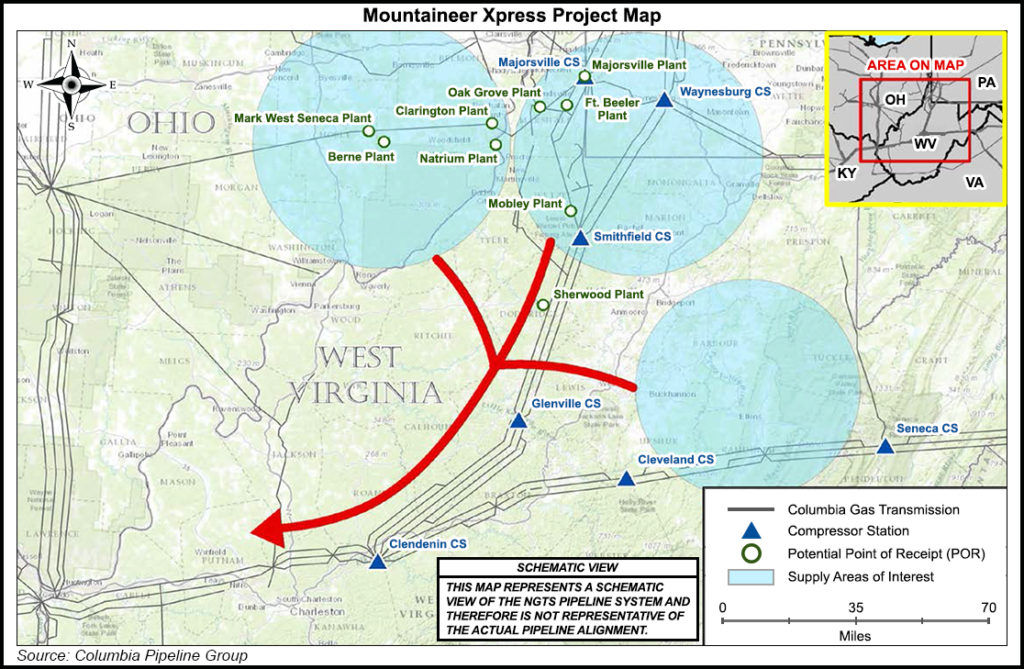Infrastructure | NGI All News Access | NGI The Weekly Gas Market Report
FERC Clears Mountaineer XPress for Partial Service
FERC has authorized partial service to begin on Columbia Gas Transmission LLC’s (TCO) Mountaineer XPress project, opening yet another path for nearly 1 Bcf/d to start flowing out of the Appalachian Basin.

The Federal Energy Regulatory Commission cleared the TransCanada Corp. affiliate to place 113 miles of 36-inch diameter pipeline stretching across nine West Virginia counties between mileposts 51.1 and 163.9 into service. It also gave the go-ahead for another six miles of 24-inch diameter pipeline in Doddridge County, WV, a compressor station and associated facilities.
The approval would allow project anchor shipper Antero Resources Corp. to start flowing 700 MMcf/d on the system, according to TCO’s filing last month requesting start-up.
Overall, Mountaineer XPress would add 164.5 miles of 36-inch diameter pipe and the six miles of 24-inch line that was authorized for service, expanding the TCO system by adding 2.7 Bcf/d. It’s designed to move more natural gas from the Marcellus and Utica shales to markets in the Midwest, Northeast, South and Gulf Coast.
The project received its FERC certificate a year ago when the Commission also issued a certificate for the Gulf XPress project, which would add another 875 MMcf/d on the Columbia Gulf system to move Appalachian gas to points in Mississippi and Louisiana.
Mountaineer had been targeted for a late 2018 in-service date, but problems with erosion controls have hindered some progress. FERC said in its authorization letter that it would continue to inspect and monitor the rights-of-way to ensure the company ultimately finishes restoration of the 155 land slips identified in Columbia Gas’ latest report. The Commission noted that rehabilitation and restoration along the route in affected areas is “generally proceeding satisfactorily” as work on the remainder of the system is completed.
Partial service on Mountaineer marks yet another pipeline project for Appalachia. Last year, major projects such as the Nexus Gas Transmission system and Atlantic Sunrise came online, along with other smaller projects, that have helped alleviate bottlenecks throughout the region.
© 2024 Natural Gas Intelligence. All rights reserved.
ISSN © 1532-1231 | ISSN © 2577-9877 | ISSN © 1532-1266 |
